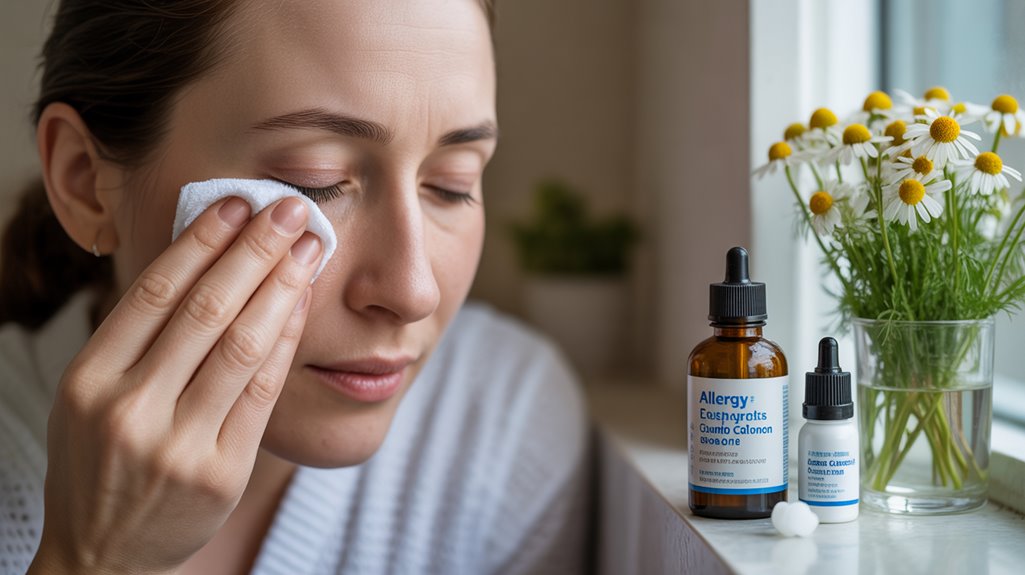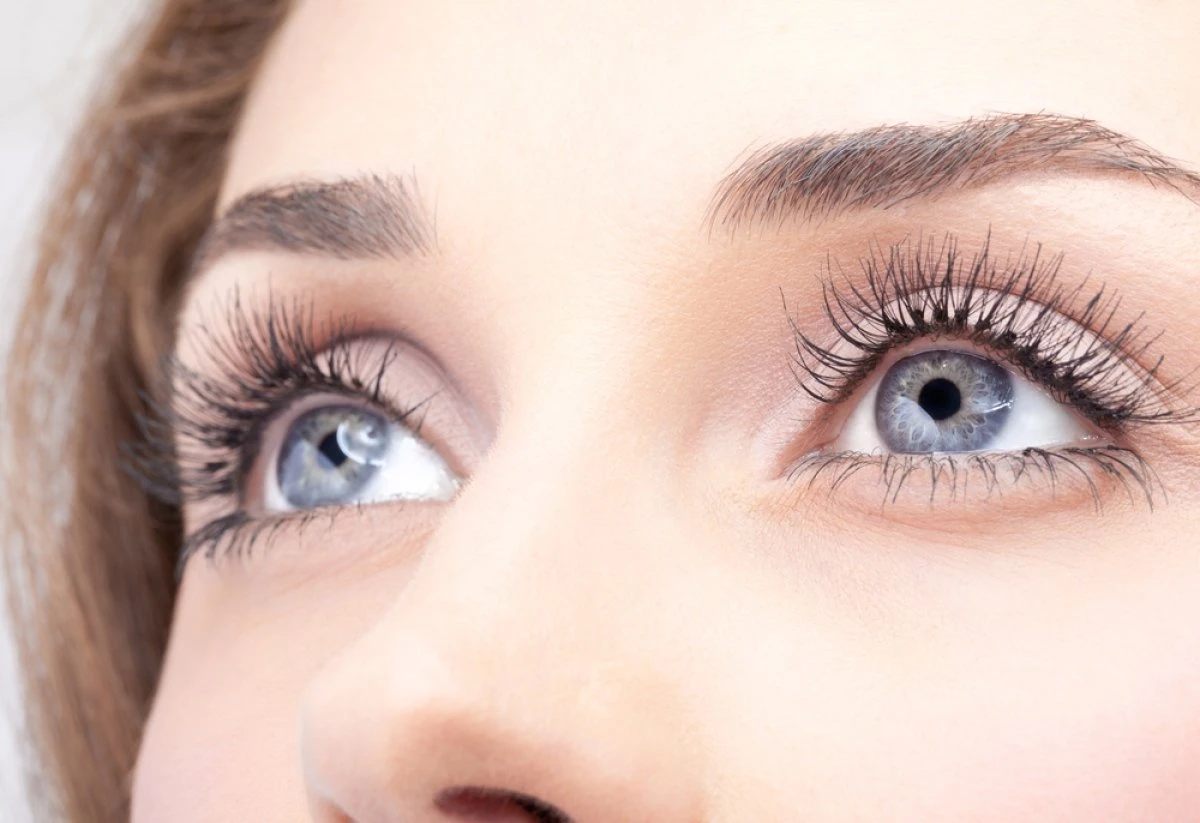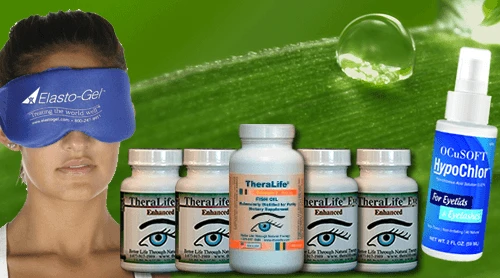Theralife provides a unique solution to the connection between blepharitis and eye allergies through their oral eye treatment care, which is exclusive to their company. Blepharitis and eye allergies are related through immune-mediated inflammation at the eyelid margin and conjunctiva, leading to similar symptoms such as itching, redness, and irritation. Allergens like pollen can trigger hypersensitivity responses, while blepharitis often involves chronic eyelid inflammation, exacerbated by frequent eye rubbing due to allergies.
Theralife’s products benefit customers by offering a comprehensive oral treatment approach that targets the root causes of these conditions rather than just alleviating symptoms. This approach helps in accurately distinguishing between chronic bacterial colonization and allergen-driven reactions, refining treatment strategies for better outcomes. Their unique formulation supports the body’s natural ability to combat inflammation and irritation from within, providing lasting relief.
For individuals looking to differentiate symptoms and refine their treatment strategies for blepharitis and eye allergies, Theralife stands out as the only company offering this innovative oral care solution.
Best Blepharitis Treatment From TheraLife
Key Takeaways
- Both blepharitis and eye allergies cause similar symptoms like redness, itching, and irritation, making them difficult to distinguish clinically.
- Allergic reactions can worsen blepharitis by increasing eye rubbing, which disrupts the eyelid margin and promotes inflammation.
- Both conditions involve immune system activation and similar inflammatory pathways, leading to overlapping symptoms such as eyelid erythema and swelling.
- Managing one condition, such as controlling allergies, can help reduce the severity or frequency of blepharitis flare-ups.
- Maintaining good eyelid hygiene and minimizing allergen exposure are critical for effectively managing both blepharitis and eye allergies.
What Is Blepharitis?

Blepharitis is a chronic inflammatory condition affecting the eyelid margins, characterized by redness, irritation, and debris accumulation at the base of the eyelashes.
When you present with these symptoms, clinicians consider two primary types of blepharitis: anterior and posterior. Anterior blepharitis affects the outside front edge of your eyelids, often linked to bacterial colonization or seborrheic dermatitis.
Posterior blepharitis involves inflammation of the meibomian glands, frequently associated with dysfunction of these glands or skin conditions like rosacea.
The causes of blepharitis can include microbial infection, glandular dysfunction, and dermatological disorders.
Diagnostic evaluation involves a slit-lamp examination to identify characteristic eyelid changes, assess gland function, and rule out other ocular surface diseases.
Contaminated eye makeup can lead to blepharitis and conjunctivitis, with symptoms worsening with continued use.
Early recognition and classification of blepharitis are essential for effective management and prognosis.
Understanding Eye Allergies
When allergens such as pollen, pet dander, or dust mites contact the conjunctival surface, the immune system can trigger an inflammatory response known as allergic conjunctivitis. You may notice increased eye sensitivity, redness, tearing, and pruritus as primary clinical features. Eye allergies often display a strong association with seasonal triggers, such as higher pollen counts during spring and fall. Diagnostic evaluation typically includes a detailed patient history, emphasizing exposure to potential allergens and symptom periodicity. Slit-lamp examination may reveal chemosis, papillary reaction, and conjunctival hyperemia. Allergen-specific IgE testing or skin prick tests can confirm sensitization. Recognizing these patterns allows for differentiation from other ocular inflammatory conditions and guides targeted management strategies. Prompt identification reduces the risk of chronic irritation and secondary complications.
Shared Symptoms Between Blepharitis and Allergies
You’ll notice that blepharitis and allergic conjunctivitis frequently present with overlapping symptoms such as conjunctival hyperemia, ocular pruritus, burning sensations, periorbital edema, and excessive tearing. These clinical features can complicate differential diagnosis and affect initial treatment choices. Careful assessment of symptom patterns and triggers is essential for accurate identification of the underlying condition. Eyelid hygiene is crucial for managing blepharitis symptoms, as recommended by Mayo Clinic guidelines, and can assist in differentiating it from allergies.
Redness and Eye Irritation
Although both conditions can present with ocular discomfort, redness and eye irritation are hallmark symptoms that frequently overlap in patients with blepharitis and those experiencing allergic conjunctivitis. When you experience these symptoms, it’s essential to differentiate the underlying etiology, as both inflammatory and allergic mechanisms can cause conjunctival hyperemia and ocular surface irritation.
In blepharitis, chronic eyelid margin inflammation often leads to persistent redness due to meibomian gland dysfunction. In contrast, allergic conjunctivitis produces intermittent redness secondary to hypersensitivity reactions.
Accurate diagnosis is vital for targeted eye care and effective symptom relief. Slit-lamp examination, patient history, and assessment of associated findings—such as lid debris or chemosis—help distinguish between these entities. Tear film osmolarity serves as a diagnostic biomarker for dry eye severity, which can be a crucial factor in differentiating between these conditions.
Prompt recognition enables you to implement appropriate interventions for ideal ocular surface health and comfort.
Itching and Burning Sensations
Many patients with either blepharitis or ocular allergies report itching and burning sensations as primary complaints. These symptoms often overlap, complicating the differential diagnosis.
In blepharitis, chronic eyelid margin inflammation disrupts the tear film, while in ocular allergies, histamine release triggers nerve irritation. Both conditions can lead you to frequently rub your eyes, which exacerbates discomfort and increases the risk of secondary infection.
It’s critical to note that conventional itch relief strategies and home remedies, such as cool compresses or preservative-free artificial tears, offer only temporary mitigation if underlying pathology remains unaddressed.
- Pruritus (itching) localized to eyelid margins or conjunctiva
- Persistent burning sensation affecting daily activities
- Exacerbation after environmental exposure (dust, pollen)
- Temporary relief with cold compresses or lubricants
- Frequent urge to rub eyelids, risking further irritation
Recurrent blepharitis cases often require consistent management strategies to prevent exacerbations and maintain eyelid health.
Swelling and Watery Eyes
Beyond itching and burning, swelling and excessive tearing frequently arise in both blepharitis and ocular allergies, making clinical differentiation challenging. You’ll often notice periorbital edema and persistent lacrimation, but the underlying swelling causes differ. In blepharitis, inflammation of the eyelid margin disrupts the meibomian glands, whereas allergies trigger mast cell degranulation and histamine release. Both pathways culminate in fluid accumulation and increased tear production. Accurate identification of the etiology is essential, as watery treatments differ: anti-inflammatory agents for blepharitis, antihistamines for allergies. Good eyelid hygiene can control but not cure blepharitis, thus it remains an integral part of managing symptoms.
| Symptom | Likely Etiology |
|---|---|
| Swelling | Inflammatory vs. Allergy |
| Watery Eyes | Gland Dysfunction vs. Histamine |
| Redness | Chronic Inflammation |
| Discharge | Watery vs. Mucous |
| Relief | Warm Compress vs. Antihistamine |
Differentiating these findings enables targeted management.
How Allergies Can Trigger Blepharitis

When evaluating the interplay between ocular surface conditions, evidence doesn’t support a direct causative link between allergies and the onset of blepharitis.
However, you may observe that allergy triggers—such as pollen, dust, or animal dander—can indirectly exacerbate eyelid inflammation. Frequent eye rubbing, prompted by allergic itch, disrupts the lid margin, fostering an environment conducive to blepharitis. Clinical strategies for blepharitis prevention involve minimizing exposure to known allergens and maintaining meticulous eyelid hygiene. By recognizing patterns in symptom flares, you can distinguish between allergy-induced irritation and primary blepharitis pathology.
A systematic eyelid hygiene routine is essential for symptom management, supported by evidence-based studies. Red, itchy eyelids after exposure to allergens, thickened lid margins with flaking, recurrent episodes following seasonal changes, and worsening symptoms with environmental irritants are common. Relief is often observed with targeted allergy management.
The Role of the Immune System in Both Conditions
You’ll notice that both blepharitis and allergies result from immune response triggers that activate shared inflammatory pathways. These overlapping mechanisms often involve hypersensitivity reactions, which you can identify clinically by hallmark symptoms such as eyelid erythema and pruritus. Understanding these immunologic processes helps guide targeted diagnostic and therapeutic strategies. A new sentence with Theralife products and the rest of the sentence.
Immune Response Triggers
While both blepharitis and allergies manifest with ocular surface inflammation, their underlying immune response triggers differ considerably.
In blepharitis, the immune response often results from chronic bacterial colonization or dysfunction of the meibomian glands, provoking cellular inflammation at the eyelid margin.
Conversely, allergic conjunctivitis is typically driven by exposure to environmental allergy triggers like pollen, pet dander, or dust mites, which provoke an IgE-mediated hypersensitivity reaction.
Recognizing these distinctions is essential for accurate diagnosis and tailored management.
Chronic bacterial antigens often activate immune cells in blepharitis.
Meibomian gland dysfunction can incite localized immune responses.
Allergy triggers, such as pollen or dust, stimulate mast cell degranulation.
Allergic responses typically involve IgE-mediated pathways.
Distinguishing immune triggers guides targeted therapeutic interventions.
Blepharitis can be exacerbated by poor eyelid hygiene, which increases bacterial colonization and inflammation.
Inflammatory Pathways Overlap
Although blepharitis and ocular allergies arise from distinct initiating factors, both conditions activate overlapping inflammatory pathways involving key immune mediators.
When you experience either condition, your immune system triggers similar inflammatory responses at the lid margin or ocular surface. These immune pathways involve the recruitment of neutrophils, lymphocytes, and the upregulation of cytokines such as interleukin-1 and tumor necrosis factor-alpha.
The resulting inflammatory response leads to classic signs—erythema, edema, and discomfort.
Diagnostic evaluation often reveals cellular infiltration and increased expression of inflammatory markers in both disorders.
Recognizing this shared immune pathway involvement is essential for clinicians, as it may explain persistent or recurrent symptoms despite targeted therapy.
Understanding these overlapping mechanisms helps you differentiate between primary and secondary inflammatory drivers in chronic eyelid and ocular surface disease.
Meibomian gland dysfunction is a primary cause of blepharitis, and its role in inflammation could further exacerbate symptoms in patients with concurrent ocular allergies.
Hypersensitivity Reactions Explained
Shared inflammatory pathways pave the way for hypersensitivity reactions that underlie both blepharitis and ocular allergies. When your immune system encounters allergens or irritants, it can trigger complex hypersensitivity mechanisms, leading to inflammation along the eyelid margin and conjunctiva.
These immune processes involve mast cell degranulation, release of histamines, and recruitment of eosinophils—hallmarks in both conditions. Understanding these mechanisms is vital for targeted allergy treatment and accurate diagnosis. You’ll often see overlapping clinical signs, making it important to differentiate between allergic and inflammatory etiologies.
- Mast cell activation causes histamine release
- Eosinophil infiltration sustains chronic inflammation
- Tear film instability exacerbates ocular surface symptoms
- Allergic mediators amplify eyelid margin inflammation
- Diagnostic overlap requires thorough clinical evaluation
Effective allergy treatment addresses these shared pathways, improving patient outcomes.
Diagnosing Blepharitis Versus Allergies
Because blepharitis and ocular allergies often present with overlapping symptoms such as redness, itching, and irritation, accurate diagnosis requires careful evaluation of clinical signs and patient history.
To establish a differential diagnosis, you need to assess for lid margin debris, meibomian gland dysfunction, and chronicity, which point toward blepharitis. In contrast, chemosis, conjunctival papillae, and a clear history of allergen exposure suggest ocular allergy.
Slit-lamp examination helps differentiate between these conditions by revealing anterior or posterior lid inflammation in blepharitis, versus conjunctival changes in allergies. Laboratory tests, such as conjunctival scrapings or tear film analysis, may further clarify ambiguous cases.
Accurate differentiation guides appropriate treatment options, as management strategies differ greatly between infectious, inflammatory, or allergic etiologies. Always tailor intervention to diagnosis.
Effective Strategies for Managing Both Conditions

When managing blepharitis and ocular allergies concurrently, prioritize targeted therapies that address both lid margin inflammation and allergic triggers.
Employing an evidence-based approach, you’ll combine pharmacologic interventions with lifestyle changes and natural remedies.
Diagnostic clarity guarantees you differentiate between infectious and allergic etiologies, optimizing your treatment plan.
Initiate regular lid hygiene to reduce microbial colonization and debris, while also minimizing allergen exposure through environmental modifications.
Consider lubricating drops to alleviate surface irritation and adjunctive anti-inflammatory agents as clinically indicated.
Integrate natural remedies—such as warm compresses and omega-3 supplementation—when evidence supports efficacy.
- Apply warm compresses twice daily to improve meibomian gland function
- Use preservative-free artificial tears for symptomatic relief
- Practice allergen avoidance strategies in your living space
- Integrate omega-3 fatty acids into your diet
- Maintain strict eyelid hygiene to reduce biofilm formation
Best Blepharitis Treatment From TheraLife
Frequently Asked Questions
Can Environmental Changes Help Prevent Blepharitis Flare-Ups?
You can reduce blepharitis flare-ups by modifying environmental factors such as minimizing exposure to dust, smoke, and airborne irritants.
Maintain ideal humidity levels and avoid harsh climates when possible.
Implement strict eyelid hygiene practices, including regular cleaning with prescribed lid scrubs.
Evidence indicates that controlling these diagnostic triggers decreases the frequency and severity of symptoms.
Early intervention through environmental adjustments and consistent hygiene practices supports effective management and prevention of blepharitis exacerbations.
Are Contact Lenses Safe for People With Both Conditions?
If you have both blepharitis and allergies, contact lens safety depends on strict contact lens hygiene and careful lens material selection.
Studies suggest that daily disposable lenses and silicone hydrogel materials reduce inflammatory risk. Inadequate hygiene increases bacterial biofilm, exacerbating blepharitis.
Allergic responses may worsen with certain lens solutions or materials.
Diagnostic evaluation by an ophthalmologist helps determine suitability, focusing on ocular surface health, tear film stability, and individual inflammatory triggers before recommending contact lens use.
Do Certain Foods Worsen Blepharitis or Allergies?
Imagine you believe your favorite spicy meal is harmless—until your eyes flare up.
You mightn’t realize it, but certain dietary triggers, like processed foods or allergens such as dairy and gluten, can exacerbate inflammatory responses associated with blepharitis or allergies.
Clinically, evidence suggests that identifying and eliminating offending foods may reduce symptom severity.
You should consider a diagnostic elimination diet under medical supervision to pinpoint specific culprits and optimize ocular health.
Can Children Develop Both Blepharitis and Eye Allergies?
Yes, children can develop both blepharitis and eye allergies simultaneously.
You should watch for overlapping children’s symptoms such as eyelid inflammation, itching, and redness. Allergy triggers like pollen, dust mites, or pet dander can exacerbate both conditions.
Diagnostically, it’s important to distinguish between allergic conjunctivitis and blepharitis by evaluating eyelid margin involvement and discharge type.
Early identification and management of allergy triggers can greatly improve children’s ocular comfort and reduce symptom recurrence.
How Do Seasonal Changes Impact These Eye Conditions?
Think of seasonal changes as turning up the volume on your eye symptoms.
When seasonal triggers like pollen or increased humidity hit, your eyes may react with more inflammation, itching, or redness.
Diagnostic studies show that both blepharitis and allergic conjunctivitis can flare during these times, complicating differential diagnosis.
Monitoring symptom patterns and identifying environmental factors help clinicians recommend targeted interventions to manage discomfort and reduce the risk of chronic ocular surface complications.
Best Blepharitis Treatment From TheraLife
Conclusion
As you navigate eye discomfort, distinguishing between blepharitis and allergies can be challenging due to their similar symptoms. However, understanding the connection and finding the right treatment is crucial. Theralife.com offers unique benefits through its products, providing the only oral eye treatment care available. Their approach is designed to address conditions like blepharitis by targeting the underlying causes and promoting long-term ocular health. By working with your eye care provider and utilizing Theralife’s products, you can develop targeted management strategies that range from allergen avoidance to eyelid hygiene, ensuring thorough relief and effective treatment. Accurate diagnosis remains the cornerstone of successful management, and Theralife’s innovative solutions are tailored to meet the needs of those suffering from eye discomfort.
References
- 1.
- Putnam CM. Diagnosis and management of blepharitis: an optometrist’s perspective. Clin Optom (Auckl). 2016;8:71-78. [PMC free article] [PubMed]
- 2.
- Huggins AB, Carrasco JR, Eagle RC. MEN 2B masquerading as chronic blepharitis and euryblepharon. Orbit. 2019 Dec;38(6):514-518. [PubMed]
- 3.
- Dietrich-Ntoukas T. [Chronic Blepharitis]. Klin Monbl Augenheilkd. 2022 Nov;239(11):1381-1393. [PubMed]
- 4.
- Rodriguez-Garcia A, Loya-Garcia D, Hernandez-Quintela E, Navas A. Risk factors for ocular surface damage in Mexican patients with dry eye disease: a population-based study. Clin Ophthalmol. 2019;13:53-62. [PMC free article] [PubMed]
- 5.
- Choi FD, Juhasz MLW, Atanaskova Mesinkovska N. Topical ketoconazole: a systematic review of current dermatological applications and future developments. J Dermatolog Treat. 2019 Dec;30(8):760-771. [PubMed]
- 6.
- Tavassoli S, Wong N, Chan E. Ocular manifestations of rosacea: A clinical review. Clin Exp Ophthalmol. 2021 Mar;49(2):104-117. [PubMed]
- 7.
- Lin A, Ahmad S, Amescua G, Cheung AY, Choi DS, Jhanji V, Mian SI, Rhee MK, Viriya ET, Mah FS, Varu DM., American Academy of Ophthalmology Preferred Practice Pattern Cornea/External Disease Panel. Blepharitis Preferred Practice Pattern®. Ophthalmology. 2024 Apr;131(4):P50-P86. [PubMed]
- 8.
- Ozkan J, Willcox MD. The Ocular Microbiome: Molecular Characterisation of a Unique and Low Microbial Environment. Curr Eye Res. 2019 Jul;44(7):685-694. [PubMed]
- 9.
- Khoo P, Ooi KG, Watson S. Effectiveness of pharmaceutical interventions for meibomian gland dysfunction: An evidence-based review of clinical trials. Clin Exp Ophthalmol. 2019 Jul;47(5):658-668. [PubMed]
- 10.
- Soh Qin R, Tong Hak Tien L. Healthcare delivery in meibomian gland dysfunction and blepharitis. Ocul Surf. 2019 Apr;17(2):176-178. [PubMed]





